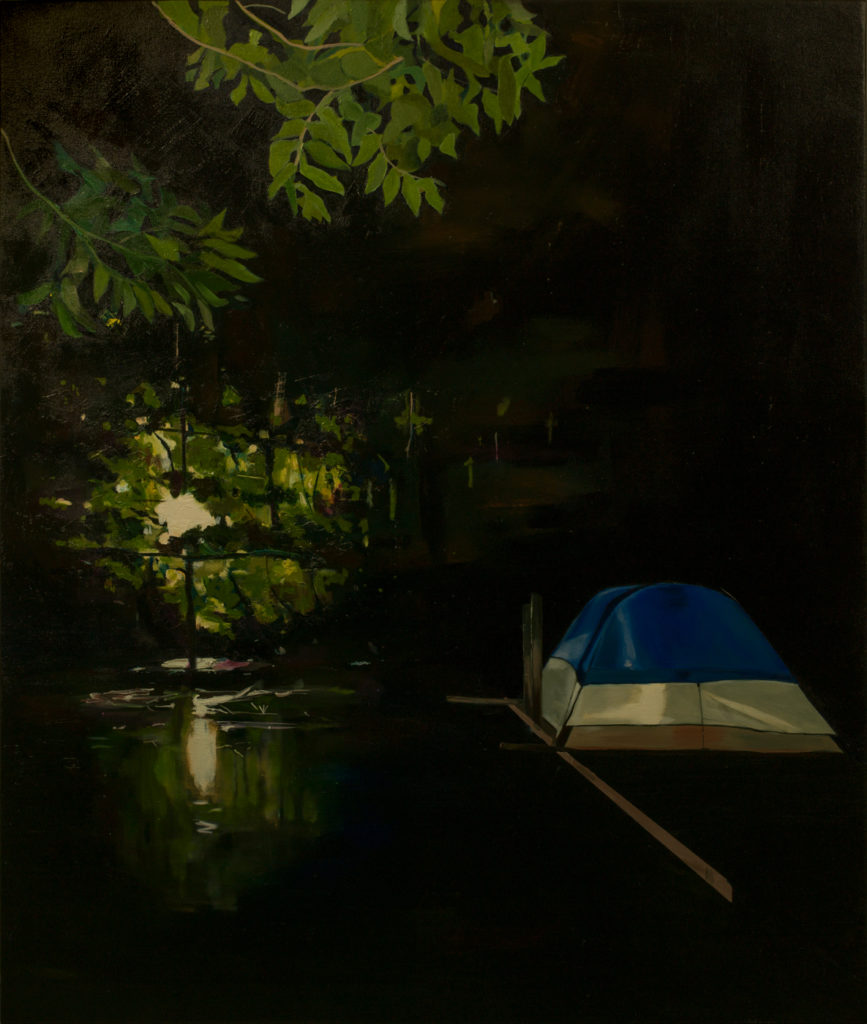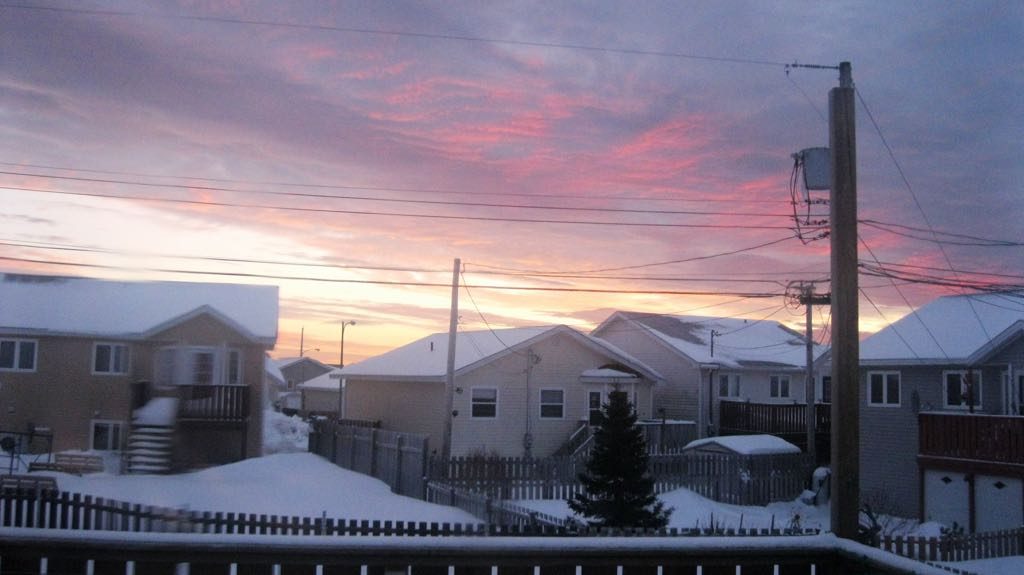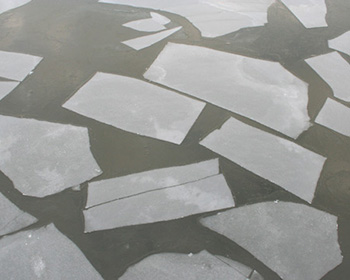Encountering the Barrier: The Work of Greg Bennett
BY Martin Poole
May 2018
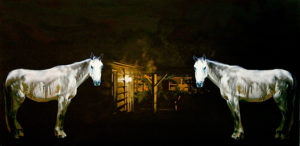
Moly Eyed Dream, Greg Bennett, (2006, 35” x 72”, oil on canvas)
My interest in Greg Bennett’s work began in 2008 at the Rooms in St. John’s, Newfoundland and Labrador, ignited by a large painting of two horses in the foyer called Moly Eyed Dream.
The piece depicts twin horses positioned symmetrically in the foreground. They are both present with, and divided from, the low lit porch in the background. It is their eyes that say the most. They are exposed and enduring, able to stare down the world and suggest to it that it does not understand their hardship. The eyes are feral, but with the wisdom of eternal patience, suggesting more from the viewer through a sort of animal magnetism. All-in-all, we are faced with a desire to aid but with no direction.
In 2009, Bennett completed a series of paintings called Dark Horse (2009, The Rooms). For this exhibition horses retain the focus of each piece and remarkably, each shares a different narrative stemming from a single event. Fittingly, these pieces were shown in a small alcove at the Rooms art gallery, an immersive zone allowing the viewer to witness the many chapters that entail. Of the subject horses, we have intimate portraits and depictions from afar, with elaborated movements hinting at their wild vitality, juxtaposed with a calm and serene presence.
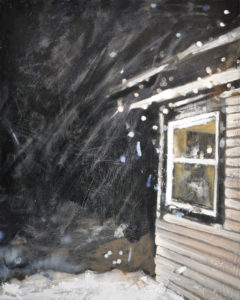
Winter Storm, Greg Bennett, (oil on plexi glass, 20″ × 16″, 2015)
With Bennett’s more recent exhibition, Fictions (2015, The Christina Parker Gallery), the subjects are wide-ranging. Snapshots of moments—one seemingly incompatible to the next, in terms of subject matter, but yet, as we will see, there is a common correlation, namely, of barriers that present in many of Bennett’s works.
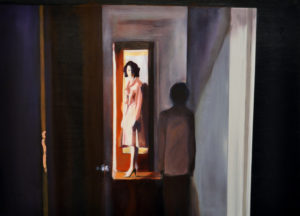
Let’s Go, Greg Bennett (Let’s Go, oil on board, 23” x 31.5”, 2015)
Sometimes the barrier is a physical division or entrapment, for instance: the blurry white covering from Winter Storm, and the layering of one subject with another in Sparkle House. Obstacles stemming from uncertainty are present as well, and this follows from visual tension, particularly as we sometimes do not know what is happening in a piece. Even when action is present, the goal may be unknown. If we combine this thought with Bennett’s titles: Let’s Go (Let’s Go, oil on board, 23” x 31.5”, 2015), Let’s Get Out of Here 1(Let’s Get Out of Here 1, oil on panel, 23” × 31.5”, 2015), and 2(Let’s Get Out of Here 2, oil on panel, 23” × 31.5”, 2015), then we find an over-arching desire to escape, but from what?
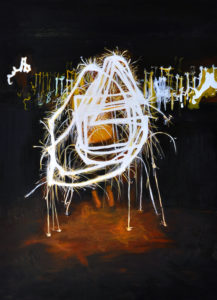
Sparkle House, Greg Bennett, ( oil on panel, 31.5” × 23”, 2014)
Bennett’s work Let’s Go contains ready examples. We see a mother waiting at the door for her son. They are both in contrast to the other; the yin and the yang of their situation. The mother, well-lit, dressed in an overcoat and with the door held ajar is hurrying to leave, while the son is in the darkness, linear to the door frame and corner ahead of him, as if encased in the room. Both figures and the room have symbolic highlights: the mother’s shining jacket and shoes, the son’s drooping head and arms, and the house draped with dark colors, defining a murky and inescapable environment.
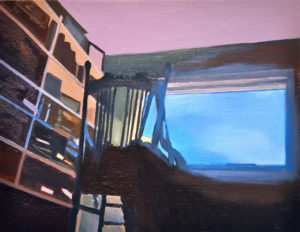
Dawn, Greg Bennett, (oil on birch panel, 16.25” × 20.75”, 2015)
Dawn hints at serenity and sedateness. It’s a composition that could have been outlined after waking up on the floor. Within the confines of the room, the blue sky alternates between beauty and imposition, two states that conflict and lend an uncertain voice to the piece. As for the surroundings: the shelf with books, the wall and ceiling, are all barely rendered, alluding to the chair that is situated to face the day.
Balancing technical precision and evocative content, Bennett’s work remains worthy of further elaboration, and further seeing. His work can be viewed at the Christina Parker Gallery and the Rooms Provincial Art Gallery.

